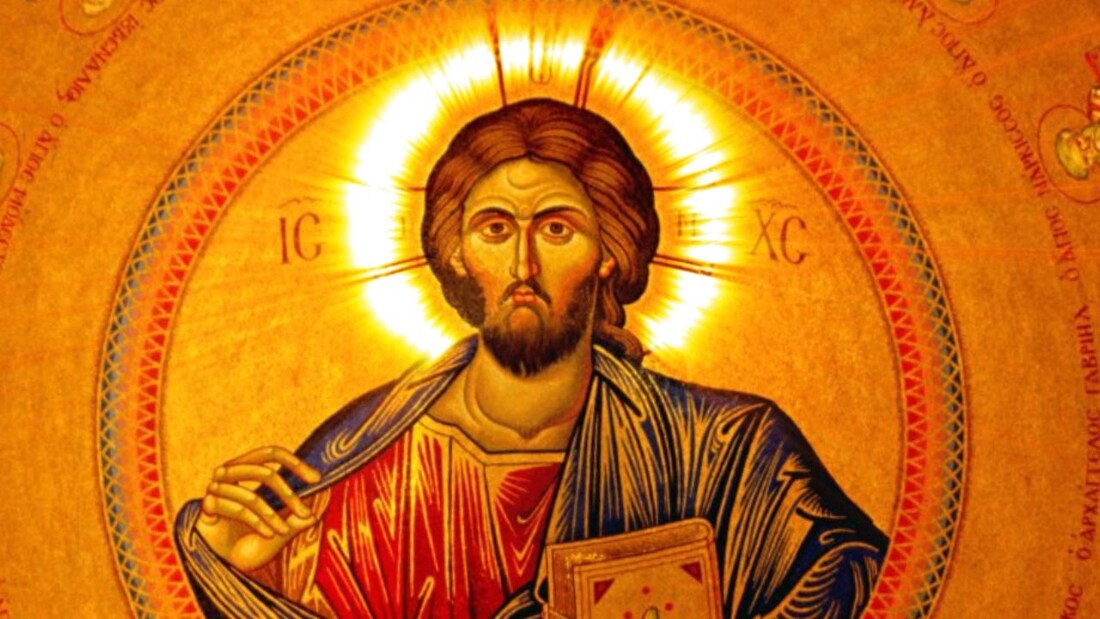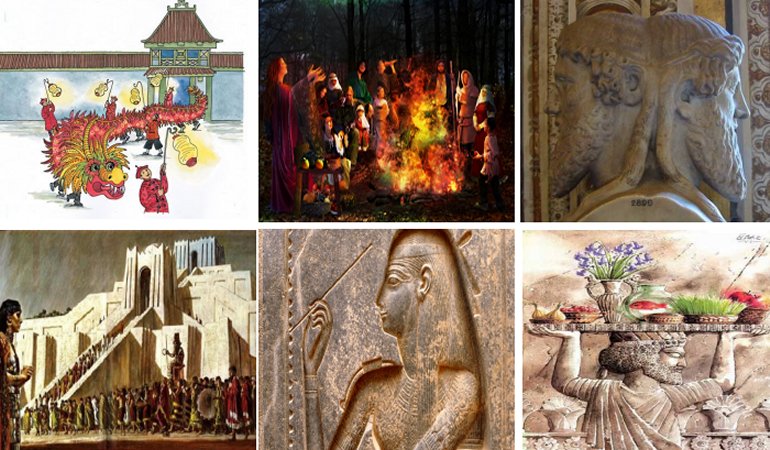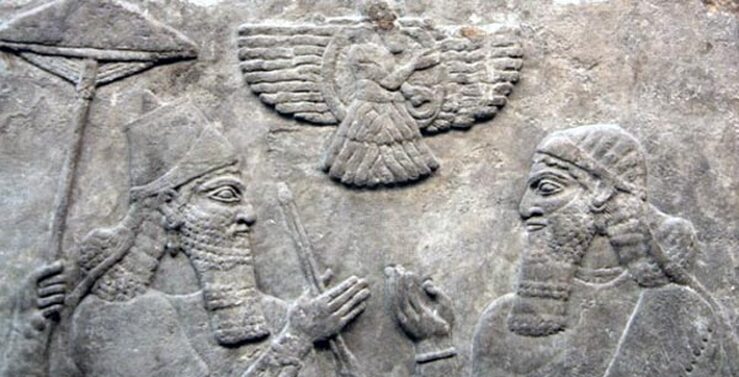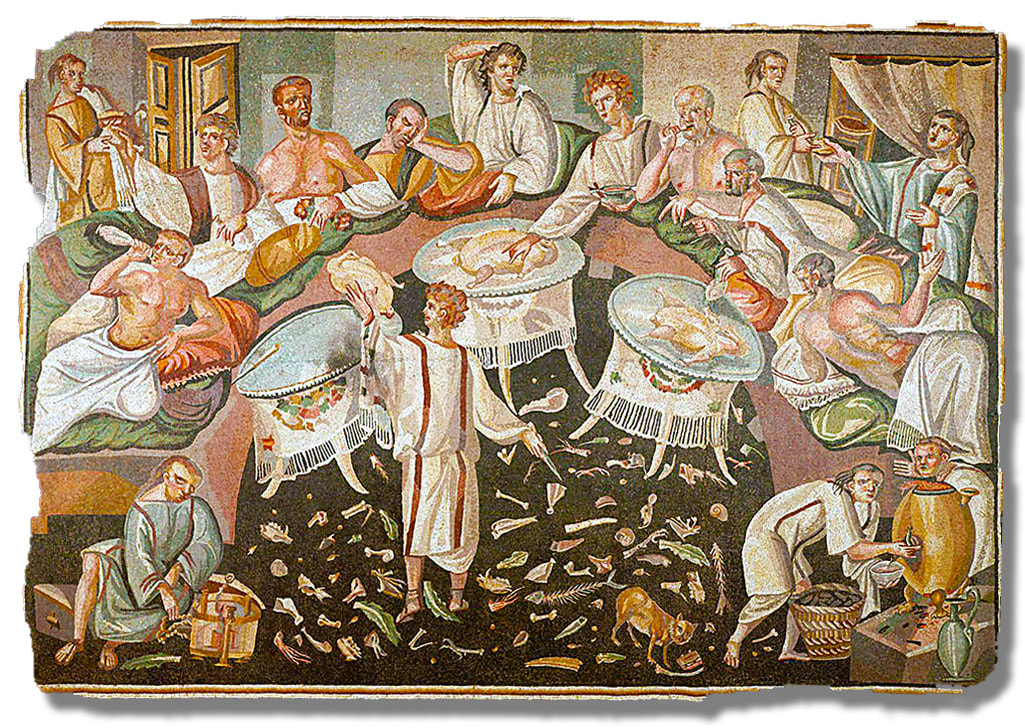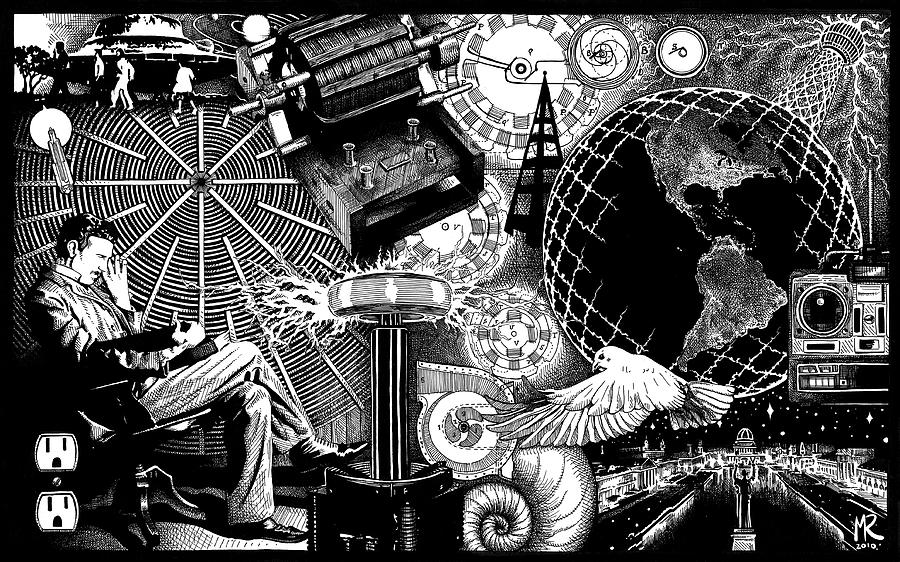0 Comments
Over the ages, the ancients did not simply observe the movements of the celestial bodies but personified them and created stories about them that were recreated upon the earth. Out of this polytheistic, astrological atmosphere came the “greatest story ever told,” as the gospel tale is, in fact, astro-theological and non-historical, recording the mythos found around the globe for eons. Thus, the Christian religion, created and shored up by forgery, fraud and force, is in reality astro-theological and its founder mythical, based on many thousands of years of observation by the ancients of the movements and interrelationships of the celestial bodies and the earth, one of the favorite of which was, understandably, the sun. The sun figured in the stories of virtually every culture worldwide. In many places and eras, the sun was considered the most visible proxy of the divine and the most potent bestower of Spirit. It was regarded as the first entity in “the Void” and the progenitor of all life and matter. The sun also represented the Archetypal Man, as human beings were perceived as “solar entities.”
In addition to being a symbol of the spirit because it rises and sinks, the sun was the “soul of the world,” signifying immortality, as it is eternally resurrected after “dying” or setting. It was also considered the purifier of the soul, as noted. Hence, from at least the Egyptian age down to the Gnostic Christians, the sun, along with the moon and other celestial bodies, was viewed as a “guide” into the afterlife. We know that it is not pleasant for the eyes to behold the direct light of the sun; it is, however, pleasant for humanity to behold the sun as it rises in the morning, bringing light and life. Indeed, the sun itself is the “face of the divine” upon which it is impossible to look. Thus, the sun was very important to the ancients, so much so that around the world for millennia a wide variety of peoples have built solar temples, monuments and entire religions with priestesses and priests of the Sun, along with complex rituals and accoutrements. Within these religions is contained the ubiquitous mythos, a template or archetypical story that personifies the heavens and Earth, and rolls them into a drama about their interrelationship. Rather than being an entertaining but useless “fairytale,” as myths are erroneously considered to be, the mythos is designed to pass along from generation to generation information vital to life on Earth, so that humans do not have to learn it repeatedly but can progress. Without the knowledge, or gnosis, of the celestial mythos, humankind would still be in caves. The celestial mythos is complicated because the solar myth is intertwined with the lunar, stellar and terrestrial myths. In addition, some of the various celestial players were introduced later than others, and many of them took on new functions as the focus switched from stars to moon to sun to other planets, and back again. For example, Horus is not only the sun but also the North Pole star, and his twin brother-adversary, Set, represents not only darkness but also the South Pole star. Furthermore, as time progresses and the skies change, as with the precession of the equinoxes and the movements of the sun annually through the zodiac and daily through its “houses,” as well as with cataclysm, the attributes of the planetary bodies within the mythos also change. The Sun of God Within the Sun Book or Holy Bible was incorporated by such priest-craft the most consolidated version of the celestial mythos ever assembled, the story of the “son of God.”
Thus, the son of God is the sun of God. The solar mythos, in fact, explains why the narratives of the sons of God previously examined are so similar, with a god-man who is crucified and resurrected, who does miracles and has 12 disciples, etc.: To wit, these stories were in actuality based on the movements of the sun through the heavens. In other words, Jesus Christ and the others upon whom he is predicated are personifications of the sun, and the gospel fable is merely a repeat of a mythological formula revolving around the movements of the sun through the heavens. For example, many of the world’s crucified god-men have their traditional birthdays on December 25th (“Christmas”). This date is set because the ancients recognized that (from a geocentric perspective in the northern hemisphere) the sun makes an annual descent southward until after midnight of December 21st, the winter solstice, when it stops moving southerly for three days and then starts to move northward again. During this time, the ancients declared that “God’s sun” had “died” for three days and was “born again” after midnight of December 24th. Thus, these many different cultures celebrated with great joy the “sun of God’s” birthday on December 25th. On the 1st of January of every year, many countries around the world celebrate the beginning of a new year. But there is nothing new about New Year’s. In fact, festivals and celebrations marking the beginning of the calendar have been around for thousands of years. While some festivities were simply a chance to drink and be merry, many other New Year celebrations were linked to agricultural or astronomical events. In Egypt, for instance, the year began with the annual flooding of the Nile, which coincided with the rising of the star Sirius. The Phoenicians and Persians began their new year with the spring equinox, and the Greeks celebrated it on the winter solstice. The first day of the Chinese New Year, meanwhile, occurred with the second new moon after the winter solstice. The Celebration of Akitu in Babylon The earliest recorded New Year’s festivity dates back some 4,000 years to ancient Babylon, and was deeply intertwined with religion and mythology. For the Babylonians of ancient Mesopotamia, the first new moon following the vernal equinox—the day in late March with an equal amount of sunlight and darkness—heralded the start of a new year and represented the rebirth of the natural world. They marked the occasion with a massive religious festival called Akitu (derived from the Sumerian word for barley, which was cut in the spring) that involved a different ritual on each of its 11 days. During the Akitu, statues of the gods were paraded through the city streets, and rites were enacted to symbolize their victory over the forces of chaos. Through these rituals the Babylonians believed the world was symbolically cleansed and recreated by the gods in preparation for the new year and the return of spring. In addition to the new year, Atiku celebrated the mythical victory of the Babylonian sky god Marduk over the evil sea goddess Tiamat and served an important political purpose: it was during this time that a new king was crowned or that the current ruler’s divine mandate was renewed. One fascinating aspect of the Akitu involved a kind of ritual humiliation endured by the Babylonian king. This peculiar tradition saw the king brought before a statue of the god Marduk, stripped of his royal regalia, slapped and dragged by his ears in the hope of making him cry. If royal tears were shed, it was seen as a sign that Marduk was satisfied and had symbolically extended the king’s rule. Ancient Roman Celebration of Janus The Roman New Year also originally corresponded with the vernal equinox. The early Roman calendar consisted of 10 months and 304 days, with each new year beginning at the vernal equinox. According to tradition, the calendar was created by Romulus, the founder of Rome, in the eighth century B.C. However, over the centuries, the calendar fell out of sync with the sun, and in 46 B.C. the emperor Julius Caesar decided to solve the problem by consulting with the most prominent astronomers and mathematicians of his time. He introduced the Julian calendar, a solar-based calendar which closely resembles the more modern Gregorian calendar that most countries around the world use today. As part of his reform, Caesar instituted January 1 as the first day of the year, partly to honor the month’s namesake: Janus, the Roman god of change and beginnings, whose two faces allowed him to look back into the past and forward into the future. This idea became tied to the concept of transition from one year to the next. Romans would celebrate January 1st by offering sacrifices to Janus in the hope of gaining good fortune for the New Year, decorating their homes with laurel branches and attending raucous parties. This day was seen as setting the stage for the next twelve months, and it was common for friends and neighbors to make a positive start to the year by exchanging well wishes and gifts of figs and honey with one another. Middle Ages: January 1st Abolished
In medieval Europe, however, the celebrations accompanying the New Year were considered pagan and unchristian-like, and in 567 AD the Council of Tours abolished January 1st as the beginning of the year, replacing it with days carrying more religious significance, such as December 25th or March 25th, the Feast of the Annunciation, also called “Lady Day”. The date of January 1st was also given Christian significance and became known as the Feast of the Circumcision, considered to be the eighth day of Christ's life counting from December 25th and following the Jewish tradition of circumcision eight days after birth on which the child is formally given his or her name. However, the date of December 25 th for the birth of Jesus is debatable . Gregorian Calendar: January 1st Restored In 1582, after reform of the Gregorian calendar, Pope Gregory XIII re-established January 1st as New Year’s Day. Although most Catholic countries adopted the Gregorian calendar almost immediately, it was only gradually adopted among Protestant countries. The British, for example, did not adopt the reformed calendar until 1752. Until then, the British Empire, and their American colonies, still celebrated the New Year in March.  There has been a revived energy revolution movement going on around the world over the past 20 years and strongest in the past year, that has not been covered or reported by mainstream press, established scientific journals or university research publications. Most of the discoveries have been made by curious, ingenious minds, who on many occasions have observed experimental results in cold fusion, superconductivity, and magnetic motors which appear to violate present laws of physics, chemistry and electrodynamics. A term has been used to describe such phenomena, is called over-unity energy or free energy, which in many cases means getting more energy out of a system or reaction (magnetic motor or cold fusion reaction) than appears to be put into it. A better explanation is that excess energy is being accessed from as yet not completely explained source. (Note: An atom bomb is an over-unity device which gets a tremendous amount of dirty energy out, in the form of harmful radiation, than is needed to trigger the reaction.) The first question that usually pops into a skeptic's mind is that if the technology is for real and discoveries have been made, such as Pons & Flieschman's cold fusion cell or Rory Johnson's fusion magnetic motor, why has it not been reported or mass produced for use by our energy-hungry world? The answer is suppression. What do we mean by suppression? Suppression can be an active type -- where a corporation or oil company or OPEC, who does not want the invention marketed, will blow up or destroy the lab and the invention and threaten to kill the inventor if he again attempts to market the revolutionary device. The other type of suppression is the passive type where a competing company, who has big bucks, such as some of the major oil companies, will come in and buy out a patent with no intention of bringing it to market until the demand for oil greatly exceeds the supply and gas prices soar, then they will start marketing a 100 mpg carburetor for ICE (Internal Combustion Engines). Other types of passive suppression include universities which are receiving big funding from oil or nuclear establishment sources, refusing to do research, or muzzling bright professors (by withholding tenure) from publishing theories and results as to the what, how's, and whys of these over-unity motors and cold fusion reactions. Or the example where a Patent office refuses to grant patents in revolutionary technology, claiming perpetual motion machines, s they see them, aren't patentable, or if they are patentable, that they can place a secrecy order or gag order on the patent, which prohibits the inventor from disclosing any information to anyone for such disclosure might be detrimental to national security. The following suppression stories you are about to read are true, to the best of our knowledge, but the names and places have been changed to protect the innocent. This information will hopefully give you some reasons why this over-unity technology has not reached worldwide attention or use. Perhaps perpetrators of this much-needed new energy technology suppression will consider reversing their policy and incorporate this technology into their business structure for a future profitable enterprise. Such technology can restore Mother Earth, which seems to be in great agony right now, with hot fusion, (nuclear power plants), blowing up, and/or radiation byproducts seeping into water tables in the Russian Arctic or at Hanford, Washington, where radioactive waste seems to be seeping into the Columbia River. In the case of oil spills such as the Exxon Valdez tanker spill, or the U.K. oil tanker spill, these major environmental accidents have destroyed pristine fish and wildlife breeding founds. What is good for the multinational oil companies, OPEC, and nuclear power plants may not necessarily be good for Mother Earth, the nation's human and animal health, or emerging countries whose energy resources are being exploited and their environment, such as the Russian Arctic tundra and South American jungles, destroyed for our short-term, consume-consume energy fling. When the Russians take decisive action, it is usually for a reason. As you will see below, the Russians have suddenly decided that now is the time to create an organization that will be tasked with detecting, tracking and potentially destroying incoming asteroids. Are they doing this now because they have finally decided that this is a good idea, or has something gotten their attention? Of course they are not likely to publicly admit if they have come to the conclusion that a gigantic space rock is heading directly toward us. Just like the U.S. government, the Russian government is very interested in maintaining social order, and so they would probably delay telling the public about a potential asteroid impact for as long as possible. In life, what people do is far more important than what they say, and the new center that the Russians have just created will not just be watching giant space rocks. According to Futurism, this new organization will be in charge of making sure “they don’t collide with Earth”… Russian space agency Roscosmos is creating a center devoted to monitoring meteors, comets, and asteroids to ensure they don’t collide with Earth — even it means having to blow them up in space. |
News Watch
Mind-opening news articles, editorials, videos & apparel that inspire our readers and help liberate them from the status quo. Stay informed.
Write For UsSpace WatchTop NewsNews Watch Categories
All
|
|
|
HAVE A TIP OR STORY TO TELL? JOIN TODAY & SHARE YOUR STORY!
If you have a breaking news tip or idea, please email: [email protected] Apparently Apparel® is a registered trade name and part of the ZOAT International® brands network. © 2007-2023. All Rights Reserved. Privacy Policy. All art & news content posted on this site is commentary or opinion and is protected under Free Speech. ApparentlyApparel.com is not responsible for content written by contributing artists, authors or news feeds. The information on this site is provided for educational and entertainment purposes only. It is not intended as a substitute for professional advice of any kind. ApparentlyApparel.com assumes no responsibility for the use or misuse of this material.
|
|



